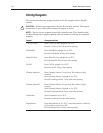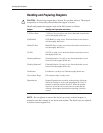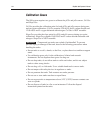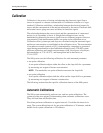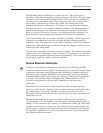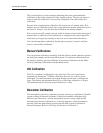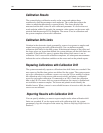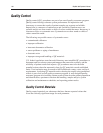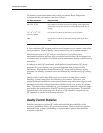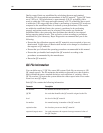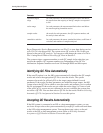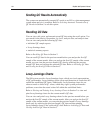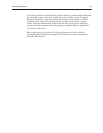
1Ć50
Rapidlab 800 Operator's Manual
Quality Control
Quality control (QC) procedures are part of an overall quality assurance program.
Quality control testing evaluates system performance for imprecision and
inaccuracy to ensure that results of patient samples are accurate and reliable.
Imprecision is a measure of random error and variability. Random errors are
sporadic and do not show trends or shifts of values around the mean. Inaccuracy is
a measure of bias or systematic error. Systematic errors show trends or shifts of
values around the mean.
The following are possible causes of systematic errors:
S contaminated calibrators
S improper calibration
S inaccurate barometer calibration
S sensor problems or aging of membranes
S electronic noise
S improper storage and handling of QC materials
U.S. federal regulations state that each laboratory must establish QC procedures to
document and to evaluate system performance that ensure the accuracy and the
reliability of patient results and reports.
4
QC procedures must also describe
remedial actions when the measured values for QC materials exceed established
limits. Your institution may also need to fulfill additional country, state, and local
requirements. Analyzing QC materials and evaluating the results using predefined
criteria is part of an overall quality assurance program. A well-designed quality
assurance program also includes written protocols that describe patient preparation
and identification, specimen collection and handling, sample analysis, system
calibration and maintenance schedules, and reporting patient results.
Quality Control Materials
Quality control materials are substances that have known expected values that
cover the clinically significant range for each parameter.



